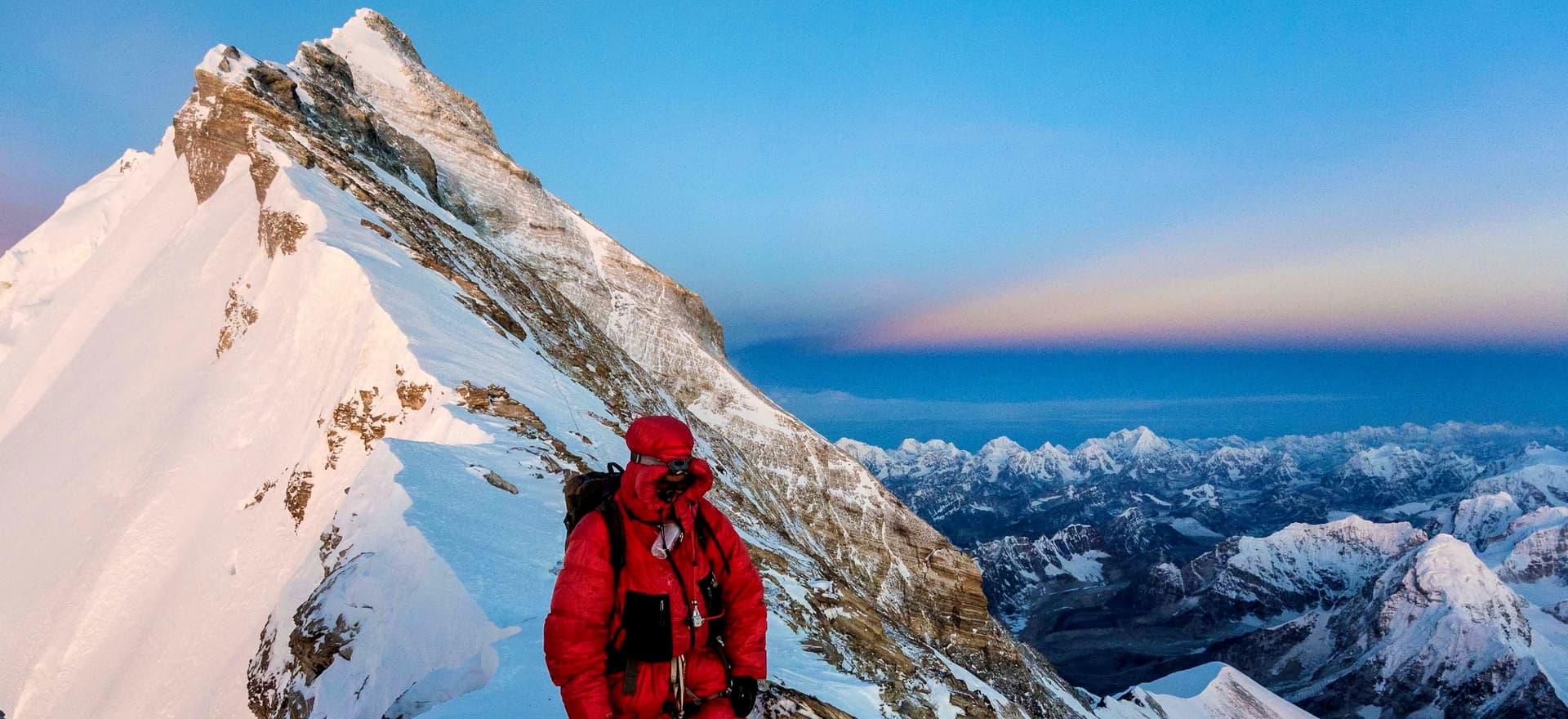Do's and Don't for your Everest Base Camp Trek
Everest Base Camp Trek is one of the most iconic and awe-inspiring treks in the world. Nestled amidst the majestic Himalayan range, this challenging adventure offers trekkers an unparalleled opportunity to witness the breathtaking beauty of the world's highest peak, Mount Everest. From lush green valleys to rugged terrains, from serene monasteries to vibrant Sherpa villages, the Everest Base Camp Trek promises a journey that transcends the ordinary.

However, with this grand adventure comes great responsibility. To fully embrace the magic of the Himalayas and ensure a safe and successful trekking experience, proper preparation and adherence to essential guidelines are of paramount importance. The journey to Everest Base Camp is not just a physical endeavor; it's a transformative voyage of self-discovery, resilience, and respect for nature and local cultures.
This comprehensive guide aims to equip you with the do's and don'ts that will help you make the most of this extraordinary expedition. Whether you are an experienced trekker seeking to conquer the Himalayan giant or a first-timer with dreams of reaching the base of Everest, we've got you covered with essential tips and insights. So, lace up your trekking boots, pack your sense of adventure, and get ready to embark on a life-changing trek to the roof of the world. Let's set foot on the trails that have beckoned countless trekkers before us, create memories that will last a lifetime, and return with a heart filled with awe and wonder for the majestic Himalayas.
1: Do's for the Everest Base Camp Trek
Do Thorough Research
Thorough research is the foundation of a successful and safe Everest Base Camp Trek. Before embarking on this epic journey, take the time to gather comprehensive information about various aspects of the trek to ensure you're well-prepared for the adventure ahead.
Trekking Routes
Research the different trekking routes available to reach Everest Base Camp. The classic route from Lukla is the most popular, but there are alternative routes like the Gokyo Lakes trek, which offers breathtaking views of the pristine lakes and surrounding peaks. Understanding the route options will help you choose the one that aligns best with your preferences and interests.
Weather and Seasonal Considerations
Learn about the weather patterns and the best time to undertake the Everest Base Camp Trek. The peak trekking seasons are spring (March to May) and autumn (September to November), offering stable weather, clear skies, and moderate temperatures. Avoiding the monsoon season (June to August) and extreme winter months (December to February) is advisable due to higher chances of unfavorable weather conditions.
Trekking Permits and Regulations
Familiarize yourself with the necessary permits required for the trek and their associated costs. Obtain the Sagarmatha National Park Entry Permit and the TIMS (Trekkers' Information Management System) card before starting the trek. Comply with the rules and regulations set by the local authorities to ensure a smooth and lawful journey.
Physical Fitness and Training
Understand the physical demands of the trek and the level of fitness required. The trek involves long hours of walking on varying terrains and ascending to higher altitudes. Engage in regular cardio exercises like hiking, running, or cycling to build stamina and endurance. Strength training for core and leg muscles will also help you tackle the challenging uphill sections.
Cultural Sensitivity
Learn about the local Sherpa culture and customs to show respect to the communities you will encounter along the way. The Everest region is rich in cultural heritage, and understanding their way of life will enhance your trekking experience. Be polite and seek permission before taking photographs of people or religious sites.
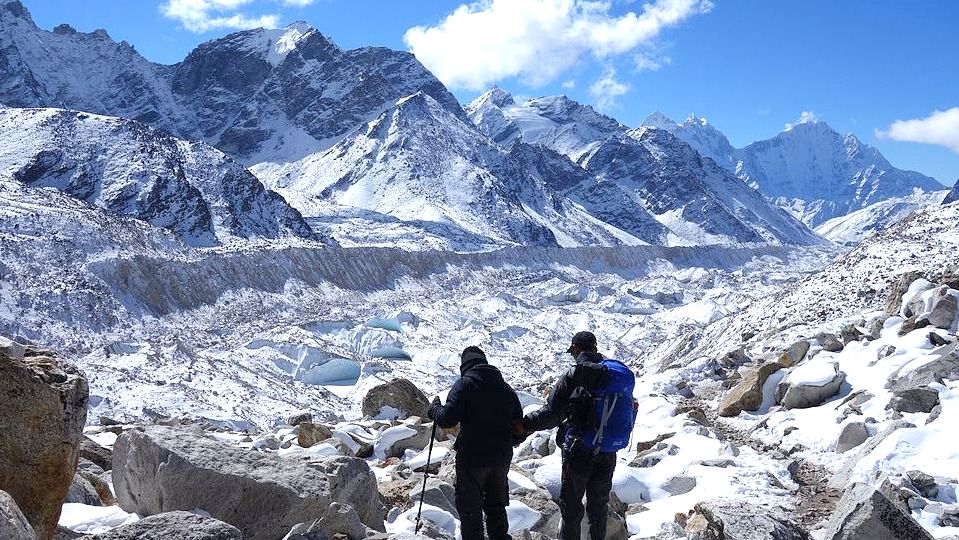
Trekking Gear and Equipment
Research and invest in high-quality trekking gear and equipment. Essential items include sturdy trekking boots, waterproof and breathable clothing, a warm sleeping bag, a backpack, and a water purifier. Proper gear will ensure your comfort and safety during the trek.
Safety Measures
Familiarize yourself with safety measures and tips for trekking in the Himalayas. Stay hydrated by drinking plenty of water throughout the trek. Wear appropriate clothing layers to adapt to changing weather conditions. Use sunscreen and wear a hat and sunglasses to protect yourself from the strong mountain sun. Carry a comprehensive first aid kit and know how to use it.
Do Train and Prepare
Cardiovascular Exercises
Cardiovascular fitness is vital for trekking at high altitudes, where the air is thinner, and oxygen levels are lower. Engaging in regular cardiovascular exercises such as jogging, running, cycling, and swimming will improve your cardiovascular endurance, lung capacity, and overall stamina. Aim for at least 30 minutes of moderate to intense cardio workouts on most days of the week. These exercises will help your body efficiently utilize oxygen, making it easier to cope with the increased demands of trekking in the Himalayas.
Hiking Practice
Hiking on hilly or mountainous terrains will closely simulate the conditions you'll encounter during the Everest Base Camp Trek. As you progress in your training, incorporate regular hiking sessions with varying levels of difficulty. Start with shorter hikes on moderate terrains and gradually increase the duration and intensity. This will help condition your muscles, joints, and feet for the extended hours of walking during the trek.
Strength Training
Strength training is essential for building the necessary muscle strength and stability to handle challenging terrains and steep ascents. Focus on exercises that target the muscles in your legs and core. Squats, lunges, step-ups, calf raises, and leg presses are excellent exercises to strengthen your lower body. Core exercises like planks, sit-ups, and Russian twists will improve stability and balance, essential for navigating uneven paths. Incorporate strength training two to three times a week to enhance your trekking performance and reduce the risk of injuries.
Gradual Progression
Avoid the temptation to push yourself too hard too soon. Start your training program gradually and progressively increase the intensity and duration of workouts over time. This approach helps prevent overuse injuries and allows your body to adapt to the increased physical demands. Gradual progression also helps you identify and address any fitness limitations or areas that need improvement as you prepare for the trek.
Trekking with a Backpack
As your trek date approaches, incorporate trekking with a loaded backpack into your training routine. This will help you get accustomed to carrying the weight of your gear during the trek. Begin with a light load and gradually increase the weight to match what you'll be carrying on the Everest Base Camp Trek. Training with a backpack will condition your muscles and help you adjust to the additional weight, making the actual trek less physically taxing.
Mindset and Mental Preparedness
Trekking to Everest Base Camp is not just a physical challenge; it also requires mental resilience and determination. Prepare yourself mentally for the demands of the journey, including the high altitudes, weather changes, and potential difficulties. Cultivate a positive mindset and mental toughness to overcome obstacles along the way. Visualize your success, focus on your goals, and remind yourself of the incredible experience that awaits you at the base of Mount Everest.
Rest and Recovery
While training is crucial, rest and recovery are equally important. Allow your body adequate time to recover between intense workouts. Rest allows your muscles to rebuild and become stronger. Overtraining can lead to exhaustion and increase the risk of injuries. Listen to your body and don't hesitate to take rest days if needed. Proper rest ensures that you're fully prepared and energized for the actual trek.
Do Acclimatize Properly
Understanding Altitude Sickness
Altitude sickness is a condition caused by exposure to high altitudes where the air pressure and oxygen levels are lower. As you ascend to higher elevations during the Everest Base Camp Trek, the air becomes thinner, and the body may struggle to get enough oxygen. This can lead to a range of symptoms, including headaches, dizziness, fatigue, nausea, loss of appetite, and difficulty sleeping. In severe cases, altitude sickness can progress to high-altitude cerebral edema (HACE) or high-altitude pulmonary edema (HAPE), both of which require immediate medical attention. Understanding the symptoms of altitude sickness is crucial to recognizing the condition early and taking appropriate action.
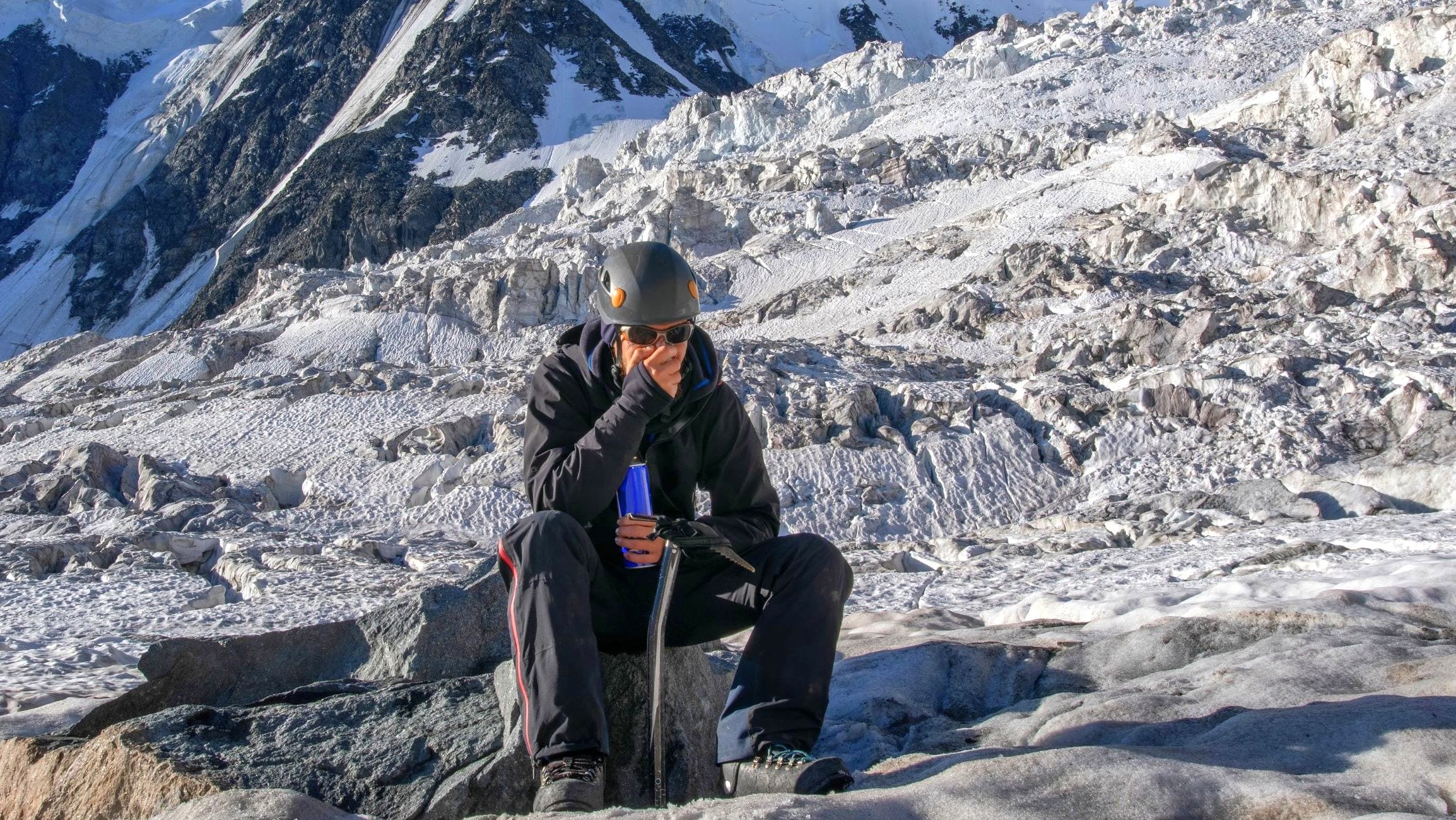
Gradual Ascent
Gradual ascent is the key to successful acclimatization. The Everest Base Camp Trek typically takes around 10-14 days to complete, allowing trekkers to ascend gradually and spend time acclimatizing at various points along the route. Ascending too quickly significantly increases the risk of altitude sickness. By following a well-planned itinerary that includes rest days at strategic locations, such as Namche Bazaar and Dingboche, you give your body time to adapt to the changing altitudes. These rest days not only help acclimatize but also provide opportunities to explore the local culture and stunning landscapes.
Stay Hydrated
Staying hydrated is essential for acclimatization. At higher altitudes, the body loses moisture faster due to increased respiration and evaporation. Dehydration can worsen the symptoms of altitude sickness and hinder your body's ability to adjust to the altitude. Drink plenty of water throughout the day, even if you don't feel thirsty. Aim for at least 3 to 4 liters of water daily. Proper hydration also aids digestion and prevents constipation, a common issue at high altitudes.
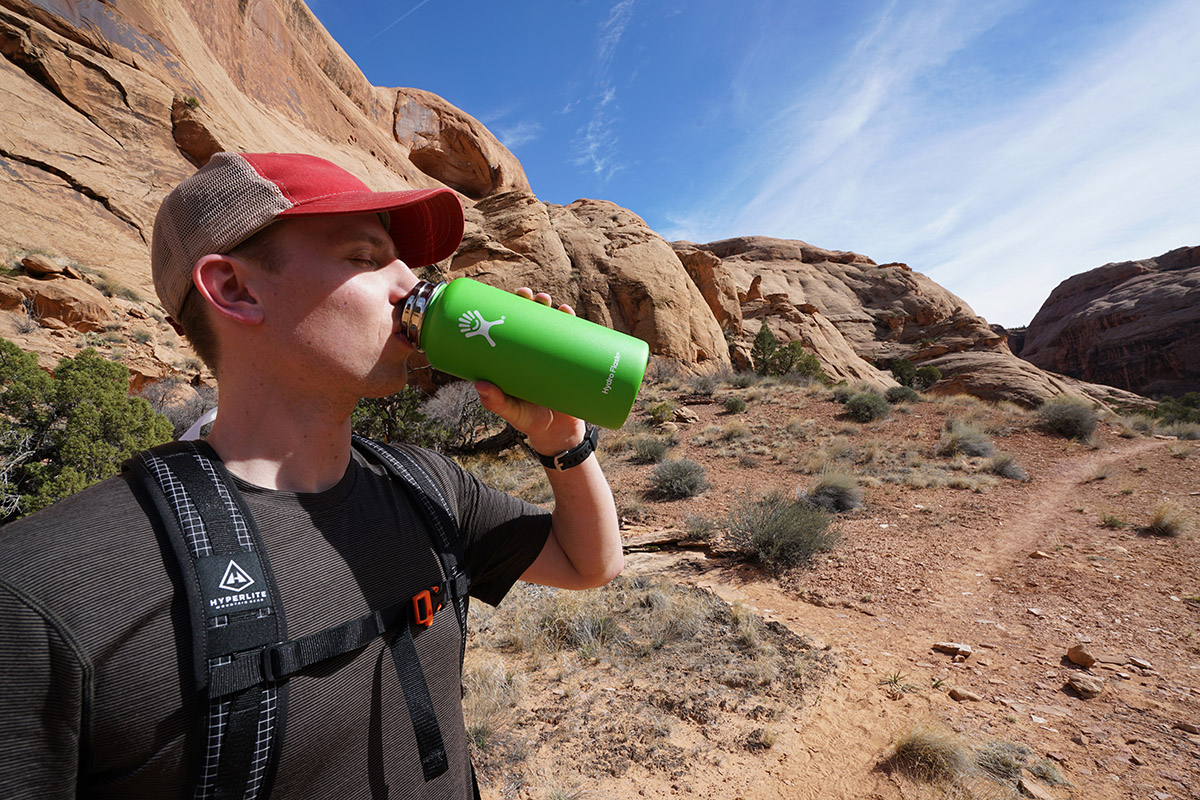
Eat Nutritious Meals
A balanced and nutritious diet is crucial for providing the energy needed for trekking at high altitudes. Carbohydrate-rich foods, such as rice, pasta, and potatoes, are excellent sources of energy and should be included in your meals. Foods high in iron, such as green leafy vegetables and lentils, help boost red blood cell production, which improves the capacity of blood to carry oxygen. Including protein-rich foods like eggs, meat, and dairy products will aid in muscle recovery and repair during the trek.
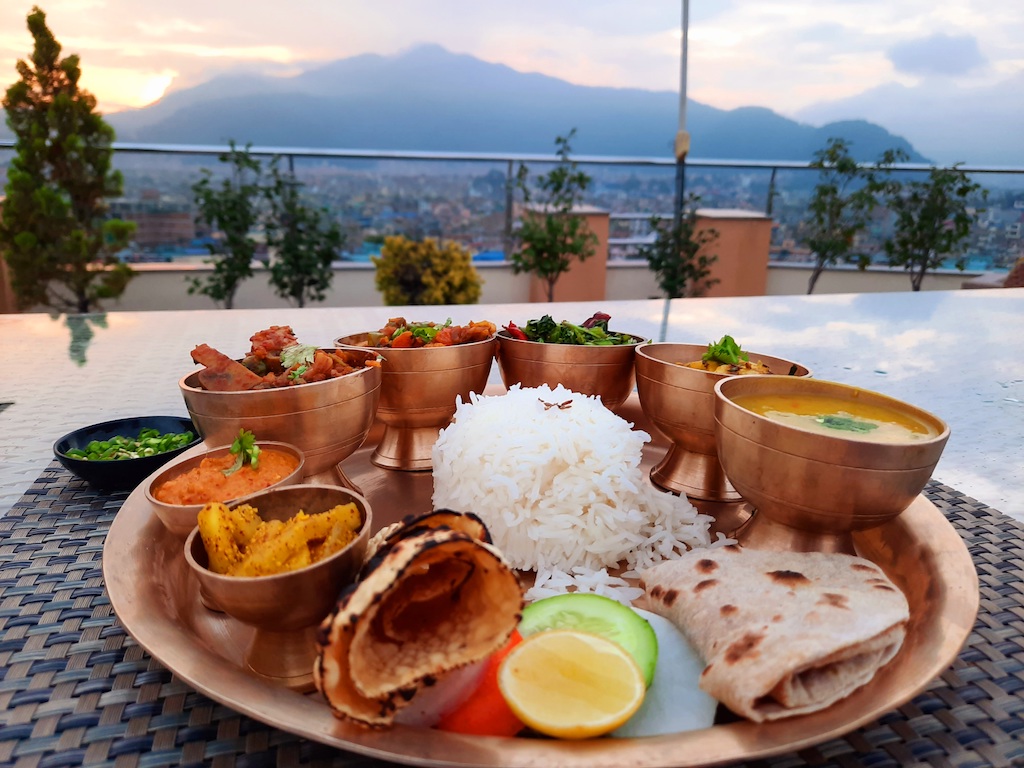
Recognize Symptoms and Act Promptly
Being aware of the symptoms of altitude sickness and paying attention to how you feel during the trek is essential. If you experience mild symptoms like headaches or dizziness, take it as a warning sign that your body needs more time to acclimatize. Do not ignore these symptoms, and communicate with your trekking guide about how you feel. If symptoms worsen or if you experience severe symptoms like confusion, difficulty breathing, or persistent vomiting, descend to a lower altitude immediately. It is essential to act promptly to prevent further complications.
Medication and Supplements
Some trekkers may consider using medications or supplements to aid in acclimatization. Acetazolamide (Diamox) is a medication that can help prevent altitude sickness by increasing breathing and reducing fluid build-up in the body. However, it should be taken only under medical supervision, and its usage is not a substitute for proper acclimatization practices. Consulting with a healthcare professional before the trek is essential to discuss your health condition and the potential need for medication or supplements.
Avoid Rapid Ascent and Stay within Recommended Altitudes
Avoid making rapid altitude gains, especially as you approach higher elevations. The recommended altitude gain per day is around 300 to 500 meters (1,000 to 1,600 feet) above 3,000 meters (10,000 feet). This gradual ascent allows your body to acclimatize more effectively. While trekking, adhere to the guidelines provided by your trekking guide regarding the distance covered and the maximum altitude reached each day.
Do Hire a Guide or Porter
Local Knowledge and Expertise
Local guides are an invaluable source of knowledge about the Everest region. They have an intimate understanding of the terrain, weather patterns, and trail conditions, which is especially beneficial in a challenging trek like Everest Base Camp. Their expertise allows them to plan the best routes, make informed decisions regarding safety, and provide accurate information about the surroundings, history, and cultural significance of the places you visit.
Safety and Emergency Assistance
Safety is a top priority when trekking at high altitudes. Local guides are trained in mountain safety and first aid, and they are well-versed in recognizing early signs of altitude sickness and other potential risks. Their presence ensures that you are in safe hands throughout the trek. In case of any medical emergencies or unforeseen situations, guides can provide immediate assistance and arrange for medical evacuation if needed.
Cultural Exchange and Communication
Hiring a local guide opens up opportunities for meaningful cultural exchanges with the Sherpa community. Sherpas are indigenous to the Everest region and have a rich cultural heritage. They can share fascinating stories, legends, and traditional practices, deepening your understanding of the local culture. Having a guide who speaks the local language can also facilitate communication with the locals and enhance your interactions with them.
Supporting the Local Economy
By hiring local guides and porters, you directly contribute to the local economy of the Everest region. Trekking tourism is a significant source of income for the Sherpa community, and your support helps sustain their livelihoods. This form of responsible tourism empowers local communities and helps preserve their way of life.
Reducing Physical Strain
Trekking to Everest Base Camp involves long hours of walking, often through challenging terrains. Carrying a heavy backpack can be physically demanding, especially at higher altitudes where the air is thinner. Hiring a porter to carry your main luggage lightens your load, allowing you to focus on enjoying the journey without the burden of heavy gear. This enables you to trek at a more comfortable pace and conserve energy for the challenging sections.
Environmental Responsibility
Hiring a porter promotes responsible trekking practices and environmental preservation. Porters are trained to follow Leave No Trace principles, ensuring that the trails and camping sites are kept clean and free of litter. By sharing the load with a porter, you contribute to sustainable trekking practices that minimize the impact on the fragile Himalayan ecosystem.
Do learn the native names
When trekking to Everest Base Camp: make an effort to learn the native names and history of Everest and its neighboring peaks. It's not about becoming a super expert, but it shows respect for the local people and their culture, which is vital since we're guests in their beautiful land. You know what's interesting? Everest wasn't always called Everest! Back in 1865, a British surveyor named it after another British surveyor, Sir George Everest. But for centuries before that, and even now, the local Sherpa people knew it as "Chongolungma," which means "Goddess Mother of the World." How cool is that? So, let's be mindful and honor the rich heritage of this place as we embark on this incredible adventure.
Do Pack Wisely
Clothing
The weather in the Everest region can be unpredictable, so it's essential to pack a variety of clothing layers to adapt to varying temperatures. Include moisture-wicking base layers, insulating mid-layers (such as fleece or down jackets), and a waterproof and windproof outer shell. Don't forget to pack a warm hat, gloves, and a neck gaiter or scarf to protect against the cold and wind.
Sleeping Bag
A high-quality sleeping bag rated for colder conditions is a must. The teahouses and lodges along the trek may not always provide sufficient heating, especially at higher altitudes. A good sleeping bag will keep you warm and comfortable during chilly nights.
Trekking Shoes
Invest in sturdy and comfortable trekking shoes that provide good ankle support and have a rugged sole for traction on uneven and rocky terrain. Make sure to break in your shoes before the trek to prevent blisters and discomfort.
First Aid Kit
A well-stocked first aid kit is essential for minor injuries and ailments that may occur during the trek. Include bandages, antiseptic creams, pain relievers, blister plasters, and any personal medications you may need. It's also a good idea to carry a small supply of altitude sickness medication, as a precautionary measure.
High-Energy Snacks
Trekking at high altitudes requires a significant amount of energy. Pack a variety of high-energy snacks like energy bars, nuts, dried fruits, and chocolates to keep you fueled and maintain your stamina throughout the journey. Hydration is also crucial, so carry a reusable water bottle and purification tablets or a water filter to treat water from local sources.
Personal Items
Remember to pack personal items such as sunscreen, lip balm with SPF, a headlamp or flashlight with spare batteries, sunglasses with UV protection, and a camera to capture the stunning landscapes along the trek. Additionally, bring a power bank to charge electronic devices as electricity availability may be limited in some areas.
Pack Light and Organize Efficiently
Packing light is essential for ease of trekking, as you'll be carrying your backpack throughout the journey. Only bring the essentials, and avoid unnecessary items that can add weight to your load. Use packing cubes or waterproof stuff sacks to organize your belongings efficiently and keep them dry in case of rain or snow.
Renting or Buying Gear Locally
If you prefer to travel light, some trekking gear can be rented or purchased in Kathmandu or Lukla before starting the trek. Renting or buying locally not only reduces the weight of your luggage during your international travel but also supports the local economy.
Trekking Permit and Documentation
Don't forget to carry all necessary permits, identification documents, and a few passport-sized photographs for obtaining permits along the trek.
2: Don'ts for the Everest Base Camp Trek
Don't Underestimate the Trek
The Everest Base Camp Trek is not your average hike - it is a challenging and physically demanding adventure that takes trekkers into one of the world's most remote and rugged terrains. Many individuals, excited by the idea of reaching the base of Mount Everest, might overlook the trek's difficulty and the potential risks involved. However, underestimating the magnitude of this journey can have serious consequences. Trekkers who are unprepared may face fatigue, injuries, or altitude-related illnesses, such as acute mountain sickness (AMS). Proper preparation and training are essential to tackle the challenges that lie ahead and to ensure that you have the physical and mental stamina to complete the trek safely and enjoyably.
Don't Litter
The pristine environment of the Everest region is a fragile ecosystem that demands preservation and respect. Littering not only spoils the natural beauty of the region but also poses a significant threat to wildlife and the local communities. The Everest Base Camp Trek attracts thousands of trekkers each year, and if each one leaves behind even a small amount of trash, it can quickly accumulate and have a detrimental impact on the environment. It is crucial to adhere to the principle of "Leave No Trace" and carry all trash back with you to the nearest disposal point. This includes not only plastic bottles and wrappers but also all waste generated during the trek. Responsible trekking practices ensure that this breathtaking landscape remains pristine for future generations to enjoy.
Don't Ignore Weather Warnings
The Himalayas are known for their unpredictable and rapidly changing weather. Ignoring weather warnings can put trekkers at risk of encountering extreme conditions, such as blizzards, avalanches, or heavy rainfall. The region's high altitude and mountainous terrain can make weather conditions even more challenging to predict and navigate. Staying informed about the weather forecasts before and during the trek is essential for making informed decisions about when and where to trek. Local authorities, experienced guides, and weather updates from reputable sources can provide valuable insights into the current and upcoming weather conditions. Being prepared to adjust your plans and itinerary based on weather forecasts is a crucial aspect of responsible trekking in the Everest region.
Don't Trek Alone
Trekking alone in the Everest region is strongly discouraged due to safety concerns. The remote and rugged terrain, coupled with the potential risks of altitude-related illnesses, can make solo trekking highly dangerous. In case of emergencies or health issues, traveling alone can leave you vulnerable without immediate assistance. Instead, it is advisable to trek with a group or hire a knowledgeable local guide who is familiar with the trails, and weather patterns, and can provide support during emergencies. Traveling with a group enhances safety, allows for shared experiences, and can make the journey more enjoyable. Moreover, experienced guides and local Sherpas can provide valuable insights into the region's culture, history, and traditions, enriching your trekking experience.
Don't drink untreated water
Drinking untreated water during the Everest Base Camp Trek is a significant health risk and should be strictly avoided. While the Himalayas are renowned for their pristine beauty, the water sources in the region may not always be safe for consumption. These water sources can be contaminated with harmful bacteria, viruses, and parasites that can cause waterborne illnesses, such as diarrhea, cholera, and giardiasis.
Trekkers must prioritize their health and well-being by drinking only safe and treated water throughout the journey. It is essential to carry a reliable water purification system, such as water purification tablets, water filters, or UV sterilization devices. These methods can effectively kill or remove harmful microorganisms from the water, making it safe to drink.
Don't Ignore Signs of Altitude Sickness
Altitude sickness, also known as acute mountain sickness (AMS), is a serious medical condition that can occur when ascending to high altitudes too quickly. The thin air at high altitudes results in reduced oxygen levels, putting stress on the body and potentially leading to AMS. Symptoms of altitude sickness may include headaches, dizziness, nausea, loss of appetite, and difficulty breathing. Ignoring these signs or trying to push through them can be dangerous and may lead to more severe forms of altitude sickness, such as high-altitude cerebral edema (HACE) or high-altitude pulmonary edema (HAPE), which can be life-threatening. It is essential to pay attention to your body and listen to its signals. If you or anyone in your group experiences symptoms of altitude sickness, it is crucial to descend to a lower altitude immediately and seek medical attention if necessary.
Don't Complain about Conditions
The Everest Base Camp trek is an adventure that takes trekkers into a remote and challenging environment. While the journey offers unparalleled beauty and cultural experiences, it also comes with certain realities. Trekkers may encounter basic facilities in teahouses, which could include squat toilets, limited amenities, and shared sleeping quarters. Complaining about these conditions not only creates a negative atmosphere but can also be seen as disrespectful to the local culture and way of life. The Everest region is home to the resilient Sherpa community, who have a deep connection with the land and its surroundings. As guests in their homeland, it is essential to show respect for their lifestyle and appreciate the simplicity of the trekking experience. Embrace the journey with a positive attitude and be open to the unique experiences that the Everest Base Camp Trek offers.
Don't Rush
Trekking to Everest Base Camp is a once-in-a-lifetime experience, and it should be savored and enjoyed. It is not a race or a competition; rather, it is a journey of self-discovery and immersion in the breathtaking landscapes of the Himalayas. Rushing along crowded trails can lead to accidents, injuries, or exhaustion. Moreover, the final approach to Everest Base Camp can be particularly crowded, as multiple routes funnel down into a common path. The increase in trekker density, combined with the sight of base camp in the distance, can create an atmosphere of excitement and urgency. However, it is essential to adopt a marathon mentality and ascend slowly, allowing your body to acclimatize to the high altitudes. Being aware of your safety and surroundings, and taking the time to appreciate the journey, will not only enhance your personal experience but also contribute to a safer and more enjoyable trek for all trekkers in the region.
Recommended Itinerary for the Everest Base Camp Trek
Day 1: Arrival in Kathmandu
Day 2: Kathmandu Sightseeing and Preparation
Day 3: Flight to Lukla and Trek to Phakding (Altitude: 2,651m)
Day 4: Trek to Namche Bazaar (Altitude: 3,440m)
Day 5: Acclimatization Day in Namche Bazaar
Day 6: Trek to Tengboche (Altitude: 3,867m)
Day 7: Trek to Dingboche (Altitude: 4,410m)
Day 8: Acclimatization Day in Dingboche
Day 9: Trek to Lobuche (Altitude: 4,910m)
Day 10: Trek to Everest Base Camp (Altitude: 5,364m) and Gorak Shep (Altitude: 5,164m)
Day 11: Hike to Kala Patthar (Altitude: 5,545m) and Trek to Pheriche (Altitude: 4,371m)
Day 12: Trek to Namche Bazaar
Day 13: Trek to Lukla
Day 14: Flight to Kathmandu
Day 15: Departure from Kathmandu
Everest Region Trekking Packages
Everest Heli Trek with Kalapathher Landing
Gokyo Lakes and Everest Base Camp Trek
Everest Base Camp Heli Trek - 9 Days
VVIP Everest Base Camp Luxury Trek
Everest Base Camp and Gokyo Lakes Luxury Helicopter Trek
Luxury Everest Base Camp Trek - 14 Days
If you need any further information, please contact us by email: at [email protected], Phone: at +977- 985 100 5129 (WhatsApp)
#Tags
Tripadvisor
5.0910 reviewsGoogle
4.8110 reviewsFacebook
4.1 recommend44 ReviewsTrustpilot
4.1 Great(5 reviews)- Trusted by50K plus traveller

